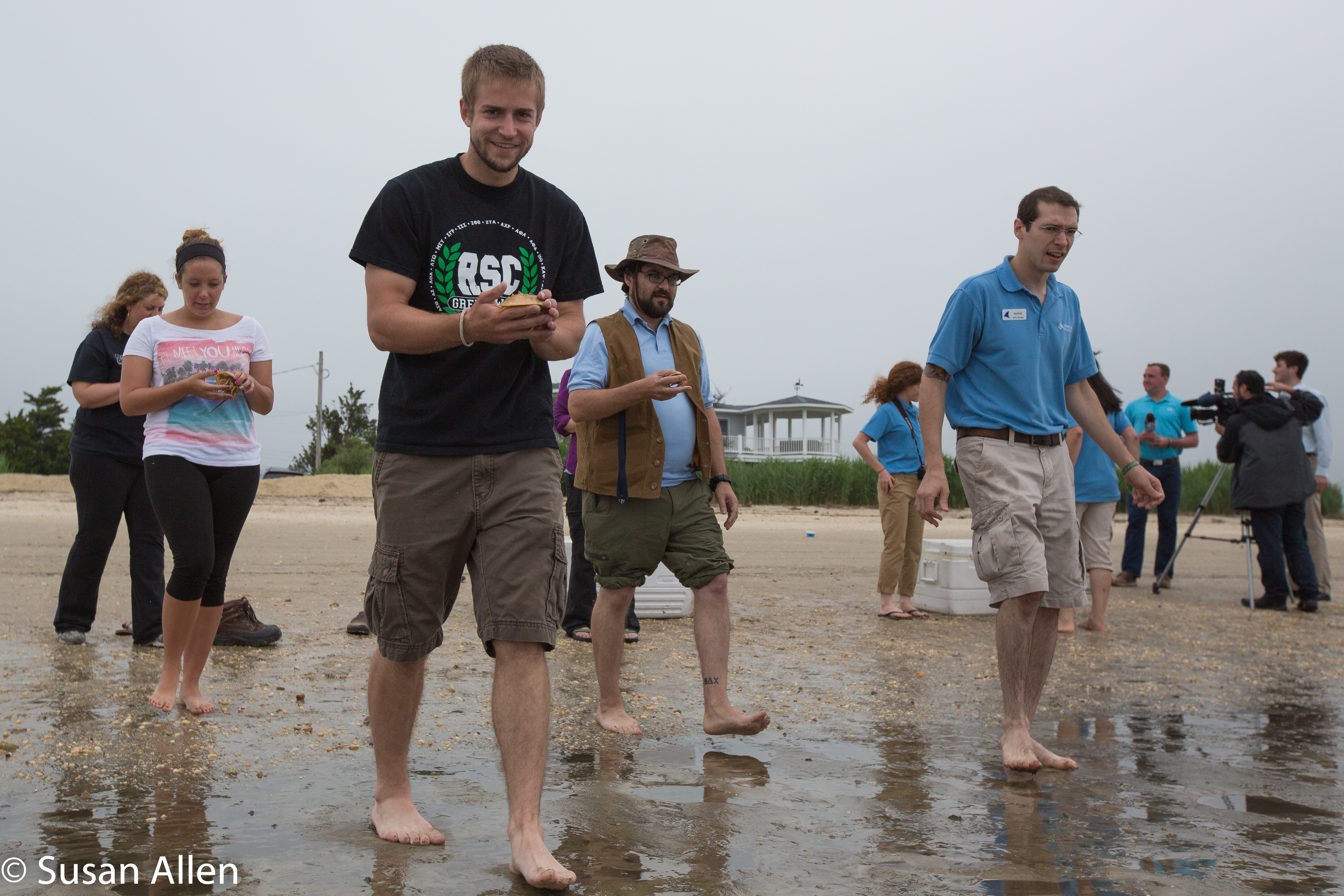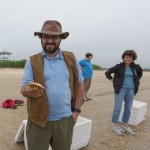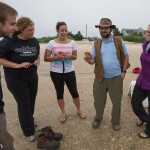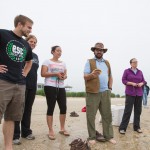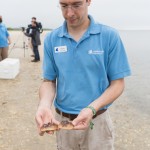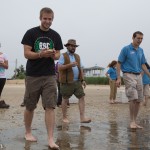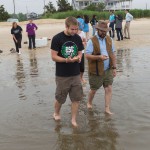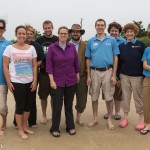Cape Conservation interns Tracy Smith, Kristina Koreivo and Joulian Wilmer waded through the Delaware Bay—the muddy bottom squishing between their toes—holding toddler-aged horseshoe crabs that just fit into the palms of their hands. The Stockton Biology majors helped to release fifty captive-raised horseshoe crabs back into their natural habitat at Kimbles Beach in Cape May County on June 11.
Three summers ago, Cape Conservation alumnus Matt Ferroni, now a senior biologist at Adventure Aquarium, was on the same beach rescuing those same horseshoe crabs as eggs from a feeding frenzy of greedy gulls and ravenous Red knots. He collected the eggs with Dr. Daniel Hernandez, an associate professor of Biology who leads the Cape Conservation Program with his wife Ilene Eberly, a Biology adjunct.
The primitive marine arthropods that pre-date dinosaurs, are a resilient species, but they face numerous challenges with humans and birds depending upon them for survival.
In a blog post, Ferroni explained that the crabs are harvested by the fishing industry for eel and conch bait and by the biomedical industry for their blue blood, which is used to help detect bacteria in surgical implants, intravenous drugs and vaccines.
Red knots, a threatened shorebird species, sync their 10,000-mile journey from southern Chile to the Arctic with the horseshoe crab spawning season. The birds stop over at Delaware Bay beaches to refuel for the second leg of their migration by feasting on the eggs, the birds’ primary food source.
“We felt it was important to get involved in helping to increase the horseshoe crab population,” said Ferroni, who established a head start program at Adventure Aquarium to do his part in helping the species.
The juvenile crabs wiggled their jointed legs and pinchers underneath their concave exoskeletons giving off a cranky impression, but they’re harmless to humans. Once freed, they slowly began crawling into the water, their tails digging a trail into the sand. They soon disappeared as they burrowed into the mud and the water swept away their tracks with the outgoing tide.
“They might be scary, but they can’t hurt you. They’re your friend. It’s a new start for an old species,” Hernandez told NBC 40 in a TV interview.
Much like the season’s early beachgoers, the young crabs were pale. Hernandez said that as snails, barnacles and other “hitch-hikers” cling onto their shells they will become a darker brown like their wild counterparts.
Each of the released crabs carried a half millimeter tag made of a fine coated wire. It’s a longshot, but if any of the tagged crabs are re-sighted by a researcher with a scanner, valuable data on their survival rate and movement pattern can be collected.
Ferroni hopes to perfect a tag that is small and durable enough to remain with the young crabs as they molt in an effort to better monitor the species.
Horseshoe crabs “have been around for hundreds of millions of years and it would be a shame for them to die on our watch,” said Hernandez.
